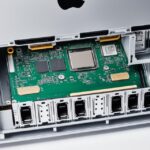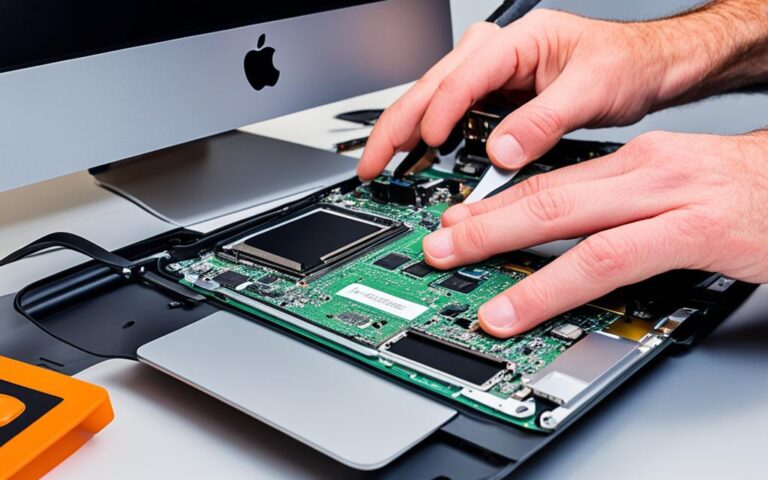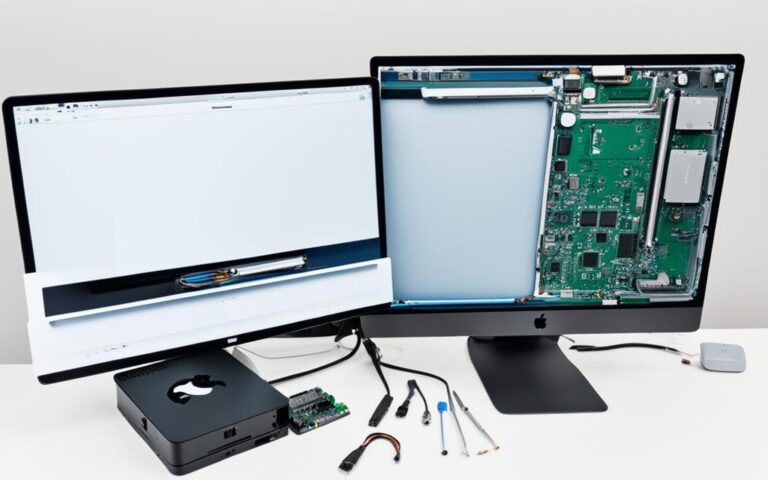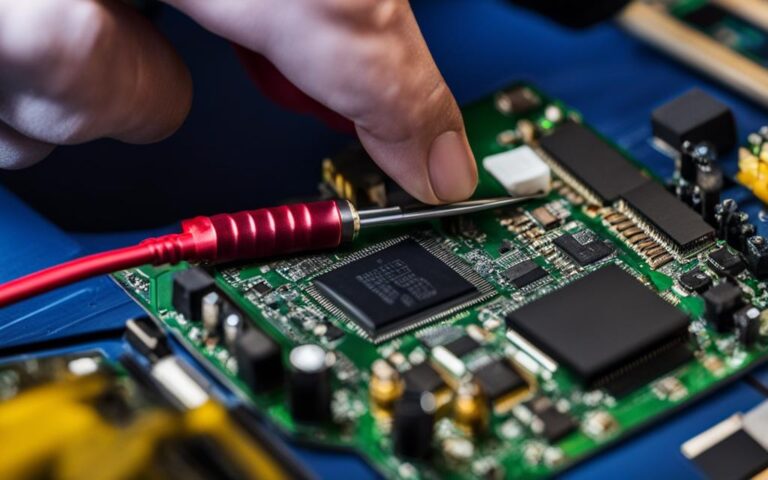Recovering Data from a Crashed iMac Hard Drive
Data recovery from a crashed iMac hard drive is a crucial process to retrieve lost files. When an iMac hard drive crashes, valuable data may seem lost forever. However, there are methods and techniques available to recover the data and restore it to its original state.
One method involves restoring a volume from another volume, creating an exact copy of the original. However, it’s important to note that when restoring one volume to another, all files on the destination volume are erased.
Another method involves connecting the crashed iMac hard drive to another Mac using a SATA to USB adapter. By unscrewing the hard drive hold bracket, disconnecting the SATA cable, and installing the hard drive to the adapter, the hard drive will show as an external drive on the working Mac.
For MacBook Pro models with a removable SSD drive, data recovery can be done by booting the Mac in Target Disk Mode and connecting it to a working Mac using a Thunderbolt cable.
To ensure a successful iMac data recovery process, it’s essential to follow the appropriate steps and precautions. By understanding the methods available and utilizing the right tools, it is possible to retrieve lost files and restore them to their intended location.
Reasons for iMac Hard Drive Failure
iMac hard drive failure can occur due to various reasons. One common cause is the aging of the hard drive. Over time, hard drives have a limited lifespan and eventually fail. Another cause is malware, which can lead to data loss or hard drive failure. Hardware problems, such as damage to the moving parts of the hard drive, can also result in failure. Physical damage, such as exposure to excessive heat, water, or humidity, can cause severe damage to the hard drive. Mishaps, such as dropping the iMac on a hard surface, can also result in mechanical problems. Power issues, including sudden power outages or electrical charge increases, can cause severe damage to the hard drive.
It is important to be aware of these potential causes of hard drive failure and take preventative measures to protect and back up important data.
Recovering Data from a Dead iMac Hard Drive
Recovering data from a dead iMac hard drive can be a challenging task. However, with the right tools and techniques, it is not impossible to retrieve your valuable files. Two effective methods for data recovery from a dead iMac hard drive are using specialized data recovery software and connecting the hard drive to another Mac or PC.
1. Using Data Recovery Software:
One reliable method is to utilize data recovery software, such as Disk Drill, specifically designed for recovering lost or deleted files. The process starts with creating a disk image backup of the iMac’s hard drive. This backup serves as a secure copy of the original data. Then, by using the data recovery software, you can scan the disk image backup and selectively recover the files you need. This targeted approach ensures quick and effective results, saving both time and effort.
2. Connecting to Another Mac or PC:
Another option for data recovery from a dead iMac hard drive is to connect it to another functioning Mac or PC. This can be achieved by removing the hard drive from the dead iMac and placing it in an external enclosure. Alternatively, you can use features like Target Disk Mode (for Macs) or the Share Disk feature (for PCs) to establish a connection between two computers.
Once connected, the data on the dead iMac hard drive will be accessible, allowing you to copy and retrieve your important files. It is crucial to follow the correct steps and use the necessary tools and software to ensure a successful data recovery process.
Remember, data recovery from a dead iMac hard drive requires caution and expertise. It is advisable to consult a professional or experienced technician if you are unsure about the process.
| Software | Features | Compatibility | Price |
|---|---|---|---|
| Disk Drill | Deep scan, file preview, selective recovery | Mac & Windows | Free (basic version) Pro version: £89.00 |
| Recuva | Quick scan, deep scan, file preview, file overwrite | Windows | Free (basic version) Professional version: £19.95 |
| Stellar Data Recovery | Quick scan, deep scan, file preview, drive health monitor | Mac & Windows | Free (limited version) Standard version: £39.99 |
Recovering Data from a Crashed MacBook Pro
When faced with a crashed MacBook Pro and the potential loss of valuable data, it is crucial to explore data recovery options. Fortunately, similar methods used for iMac data recovery can also be applied to MacBook Pro devices. By following the appropriate steps and precautions, a successful data recovery process can be achieved.
Method 1: SATA to USB Adapter
If the crashed MacBook Pro has a SATA hard drive or SATA SSD drive, one method involves removing the drive and connecting it to a working Mac using a SATA to USB adapter. This allows for the data on the crashed MacBook Pro to be copied to the working Mac, ensuring data retrieval.
Method 2: Target Disk Mode
Another option is to boot the crashed MacBook Pro in Target Disk Mode. By connecting it to a working Mac using a Thunderbolt cable, data transfer between the two devices becomes possible. This method is particularly effective for MacBook Pro models with a removable SSD drive, providing an efficient way to recover data.
Method 3: Removable SSD Drive
For MacBook Pro models with a removable SSD drive, data recovery can be achieved by removing the SSD drive from the crashed MacBook Pro and installing it in a working Mac. This allows for direct access to the SSD drive and facilitates the recovery of data.
It is important to note that regardless of the method chosen, it is essential to exercise caution and follow the appropriate procedures. This ensures the safety of the data and maximizes the chances of a successful data recovery process.
As with any data recovery process, it is advisable to seek professional assistance if needed. Technicians with expertise in MacBook Pro data recovery can provide valuable insight and ensure a smooth and successful recovery process.
Conclusion
Recovering data from a crashed or dead iMac hard drive or MacBook Pro is crucial for retrieving lost files. With several methods and techniques available, there are solutions to tackle these data recovery challenges. One potential approach involves restoring volumes or creating exact copies of the original volume. However, it is important to consider that this method erases all files on the destination volume. Alternatively, data recovery software such as Disk Drill can be employed to create disk image backups and recover data from crashed Macs.
Another option is to connect the crashed iMac hard drive or MacBook Pro to another Mac or PC, utilizing features like Target Disk Mode or Share Disk. This enables the retrieval of data by accessing the hard drive from a working device. It is crucial to act swiftly and assess the severity of the issue as it greatly impacts the success of data recovery. By following these techniques and procedures, users can significantly increase their chances of recovering important files from crashed or dead Macs.
Nevertheless, prevention remains the most effective strategy against data loss. Regularly backing up data should be a priority to safeguard important files and minimize the risk of losing data. By proactively creating backups, users can ensure the safety of their data and alleviate the need for complex data recovery processes. When it comes to crashed or dead Macs, taking preventative measures is always preferable to relying solely on data recovery solutions.












